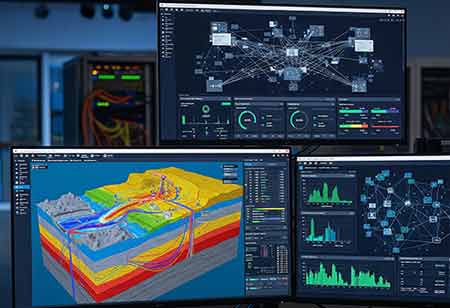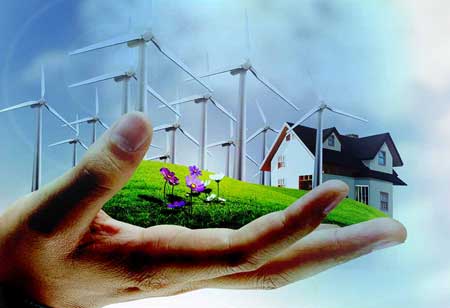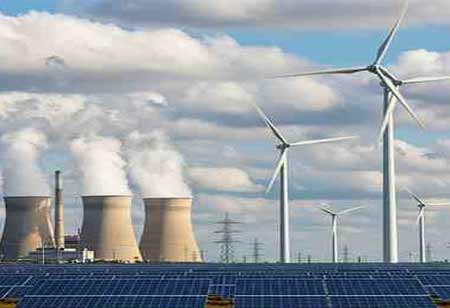CLOSE
Specials
I agree We use cookies on this website to enhance your user experience. By clicking any link on this page you are giving your consent for us to set cookies. More info
Be first to read the latest tech news, Industry Leader's Insights, and CIO interviews of medium and large enterprises exclusively from Energy Tech Review
Thank you for Subscribing
Powering Tomorrow: The State of Clean and Renewable Energy
The energy business is shifting dramatically as demand for clean and renewable energy grows, fueled by the need to cut carbon emissions and transition away from fossil fuels.

By
Energy Tech Review | Friday, August 22, 2025
Stay ahead of the industry with exclusive feature stories on the top companies, expert insights and the latest news delivered straight to your inbox. Subscribe today.
The energy business is shifting dramatically as demand for clean and renewable energy grows, fueled by the need to cut carbon emissions and transition away from fossil fuels. This change creates opportunities and challenges for enterprises and governments around the world. The quest for sustainability and energy security is transforming the sector, promoting innovation while creating significant challenges that must be overcome. This changing terrain presents substantial opportunities for those who can adapt to it.
Renewable energy sources such as solar, wind, and hydropower are now crucial to global energy policies. The move to clean energy entails upgrading outmoded infrastructure and rethinking energy production, distribution, and consumption. One prominent development is the proliferation of decentralized energy systems. These systems enable greater independence, particularly in distant places and enterprises seeking to improve energy resiliency. Small-scale renewable systems are emerging as viable alternatives to centralized grids, allowing businesses and homes to function more autonomously while reducing dependency on large-scale power networks.
Energy storage is essential to the success of renewable energy. Because solar and wind energy are intermittent, energy storage solutions help to ensure a consistent power supply. Battery storage advances are making these technologies more economical and practical, allowing more organizations and consumers to utilize them. By storing extra energy, these solutions provide greater flexibility in regulating supply and demand while giving consumers more control over their energy consumption.
Digital technology is altering energy management practices. Smart grids, digital meters, and complex monitoring systems transform energy distribution and use. These systems give real-time data, allowing utilities and consumers to optimize consumption and eliminate waste. Artificial intelligence and machine learning improve energy management systems by forecasting consumption trends, automating demand responses, and increasing system reliability. These technological advances are critical for developing smarter, more sustainable energy systems.
Despite these advances, the renewable energy sector confronts numerous obstacles. Scaling up renewable infrastructure is a significant challenge. While solar and wind power are becoming more competitive with traditional energy sources, the infrastructure to implement these technologies worldwide remains restricted. Land availability is a key barrier, particularly in heavily populated areas. Furthermore, the significant cash necessary for large-scale renewable projects can inhibit investment, making it impossible for some regions to increase their renewable capacity. Achieving a balance between environmental effects, resource availability, and cost is critical for fulfilling rising energy demand.
Grid integration adds to the complexity. Current grid infrastructure was engineered for centralized power generation, which cannot easily accommodate the intermittent nature of renewable energy sources. The variability of wind and solar electricity makes it more challenging to maintain a consistent power supply. Modernizing grid infrastructure is critical for addressing this issue. Investments in smart grids and hybrid structures, merging renewable energy with backup generation or storage, can aid energy distribution stability and reliability.
Regulatory challenges are also crucial in determining the rate of renewable energy adoption. While governments typically support clean energy, the regulatory environment remains erratic. Policies and incentives vary greatly, causing uncertainty for businesses investing in renewable energy. Policies must be clearer and more consistent to attract investment and maintain market stability. Resolving regulatory inconsistencies is critical for sustaining the sector's growth and innovation.
Innovative solutions are emerging to address these barriers. Modular renewable energy solutions, such as smaller wind turbines and floating solar panels, provide flexibility, allowing projects to be scaled and tailored to varied situations. These technologies assist in overcoming geographical and logistical constraints, allowing for more effective deployment of renewable energy systems.
Renewable energy's success continues to depend on energy storage. As storage technologies improve in efficiency and affordability, the ability to store excess renewable energy will grow. This will aid in integrating renewable energy into the grid, resulting in a more reliable power supply. Advances in grid management and energy distribution are also enhancing the use of stored energy, making energy systems more reliable.
Advances in materials science have also benefited the renewable energy sector. New materials for solar panels and wind turbines improve efficiency while cutting costs. Furthermore, innovative recycling methods for components such as wind turbine blades and batteries help mitigate waste and boost sustainability. These innovations make renewable energy more affordable and feasible for broader usage, helping the economy and the environment.
The move to sustainable energy generates significant opportunities in a variety of businesses. As demand for renewable energy grows, new markets emerge, resulting in employment development in production, installation, and engineering. The energy-as-a-service model expands, allowing customers to access customized energy solutions such as rooftop solar, energy storage systems, and energy-efficient appliances. This model gives consumers more control over their energy consumption, which helps to drive sector growth.
Public-private collaborations are also essential for establishing renewable energy projects. Governments provide financial incentives and assistance for large-scale initiatives, while corporations and research institutes work together to promote innovation. More favorable rules and investment conditions will encourage additional development and assure long-term growth in the renewable energy sector.
The clean energy industry is quickly increasing, owing to technology improvements, legislative backing, and rising demand for sustainable energy solutions. Although obstacles such as scalability, grid integration, and regulation remain, the sector is adapting to overcome these issues. Continued investment in technology and infrastructure will strengthen renewable energy's significance in global sustainability efforts. Stakeholders that embrace this shift will not only contribute to a cleaner future but will also be able to capitalize on the tremendous opportunities available in this burgeoning sector.

Copyright © 2025 Energy Tech Review. All rights reserved






